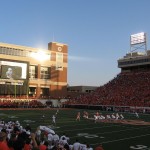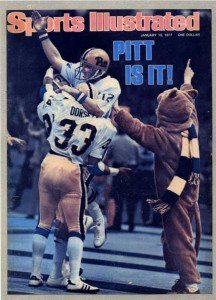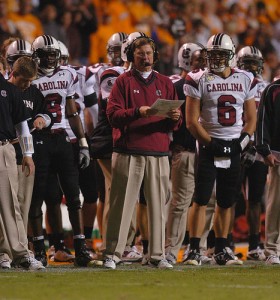
When I was writing about the principle of punishing NCAA-member institutions for gross violations, I felt like I was just writing copy. The subject feels tired and although I got a few hits for the article, I kept thinking to myself that folks would just shrug their shoulders over Okie State and if/how much it gets punished for transgressions committed against the NCAA system.
The fact is that the NCAA reeks so much that the public doesn’t necessarily get outraged over these recruiting violations and pay-for-play scandals anymore. From Tarheel Blog:
Beyond the reporting aspect, there is a clear and palatable fatigue with the NCAA over the pursuit of these types of violations. When UNC’s scandal cropped up three years ago it, along with Ohio State shortly thereafter and USC just prior constituted the first major programs to really get serious NCAA looks in quite some time. Maybe there was some thirst for blood and despite everyone knowing the NCAA system was broken, seeing major programs run through the ringer was worth good sport and nice material. Then the Miami investigation began to play out. Initially there was public disapproval of Miami’s behavior but that opinion eventually turned when it was discovered the NCAA had engaged in below the belt tactics. Suddenly no one cared what Miami did since NCAA corruption, long simmering just beneath the surface, finally boiled over. Overnight the NCAA truly became the villain losing whatever meager credibility it had left on the enforcement front.
I think the recent Miami scandal was really the turning point. We all knew the NCAA was corrupt beforehand but the ridiculous and underhanded tactics employed really brought it home. The NCAA succeeded in making Miami look sympathetic. The Miami Hurricanes, a program that was once so corrupt that SI ran an article calling for them to drop football. So corrupt at various times that even SEC teams looked clean in comparison. How unbelievable is that. I doubt that Miami didn’t commit those violations but if the investigating body can’t do its job cleanly, how are we trust its findings. Even the appearance of misconduct is enough to derail investigations.
![By Sports Illustrated Art Department [Public domain], via Wikimedia Commons Can you imagine SI running this cover article nowadays?](http://www.jollybengali.net/theconfluence/wp-content/uploads/2013/09/SI_Miami.jpg)
Can you imagine SI running this cover article nowadays?

![By Bradford J (Flickr) [CC-BY-SA-2.0 (http://creativecommons.org/licenses/by-sa/2.0)], via Wikimedia Commons Texas vs. Oklahoma State at Boone Pickens Stadium, Stillwater, Oklahoma.](http://www.jollybengali.net/theconfluence/wp-content/uploads/2013/09/Texas_at_OSU_2007.jpg)

